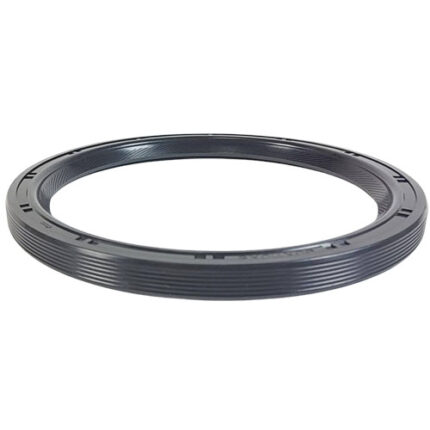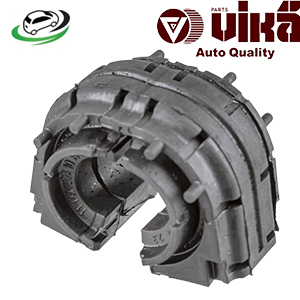-13%
GET Rear Sway Bar Bushing Audi 8U Q3 / VW CC VR6/EOS/Golf R/Golf V/Golf VI/Jetta V/Jetta VI/Passat B6/R32 MKV 1K0511327AS
Sway bar bushings are an essential part of a vehicle’s suspension system, playing a key role in stabilizing the car during turns and minimizing body roll. Although small and often overlooked, sway bar bushings contribute significantly to the overall handling and safety of a vehicle. To fully understand their importance, function, materials, signs of wear, and replacement procedures, let’s explore the topic in depth.
What is a Sway Bar?
Before diving into the details of sway bar bushings, it’s important to understand what a sway bar is. Also known as an anti-roll bar or stabilizer bar, the sway bar is a crucial component in the suspension system of a vehicle. It connects the left and right wheels through short links and helps reduce body roll during cornering by distributing the force between the two sides of the vehicle. This distribution of force keeps the car more level, improving stability and handling.
Function of Sway Bar Bushings
Sway bar bushings are the rubber or polyurethane mounts that hold the sway bar to the chassis of the vehicle. These bushings are located at each end of the sway bar and serve as a cushion between the sway bar and the vehicle’s frame. The primary functions of sway bar bushings include:
- Vibration Damping: The bushings absorb vibrations from the road, preventing them from being transferred directly to the vehicle’s chassis. This makes for a smoother and quieter ride.
- Maintaining Alignment: By keeping the sway bar firmly in place, the bushings help maintain proper alignment of the sway bar, ensuring it functions correctly to reduce body roll.
- Allowing Movement: While the sway bar needs to be securely mounted, it also needs some flexibility to move as the suspension flexes. The bushings provide this flexibility, allowing the sway bar to pivot and flex as needed while maintaining a stable connection to the chassis.
- Minimizing Wear: By providing a cushion between the metal of the sway bar and the vehicle’s frame, the bushings reduce friction and wear on both components, extending their lifespan.
Materials Used in Sway Bar Bushings
Sway bar bushings are typically made from two primary materials: rubber and polyurethane. Each material has its own set of characteristics, advantages, and disadvantages.
- Rubber Bushings:
- Advantages: Rubber bushings are known for their excellent vibration-damping properties. They provide a comfortable and quiet ride by absorbing road imperfections and preventing them from being transmitted to the vehicle’s interior. Rubber is also relatively inexpensive and provides adequate performance for most standard driving conditions.
- Disadvantages: Over time, rubber bushings can degrade due to exposure to heat, oil, and road contaminants. They can also wear out more quickly under aggressive driving conditions, leading to increased play in the sway bar and reduced effectiveness.
- Polyurethane Bushings:
- Advantages: Polyurethane bushings are much more durable than rubber bushings and are resistant to wear, heat, and chemical exposure. They provide a firmer connection between the sway bar and the chassis, resulting in improved handling and responsiveness, particularly in high-performance or off-road vehicles.
- Disadvantages: The increased stiffness of polyurethane bushings can lead to a harsher ride, as they do not absorb vibrations as effectively as rubber. They can also be more expensive and may require periodic lubrication to prevent squeaking.
Signs of Worn Sway Bar Bushings
Like any other component, sway bar bushings can wear out over time. Worn bushings can lead to several issues that affect the vehicle’s handling and ride comfort. Some common signs of worn sway bar bushings include:
- Clunking or Rattling Noises: One of the most noticeable signs of worn sway bar bushings is a clunking or rattling noise coming from the suspension, particularly when driving over bumps or uneven surfaces. This noise is caused by the sway bar moving excessively within the worn bushings.
- Increased Body Roll: If the bushings are worn, the sway bar may not function as effectively, leading to increased body roll during cornering. This can make the vehicle feel less stable and more prone to swaying in turns.
- Poor Handling: Worn bushings can cause the sway bar to shift or move out of alignment, leading to poor handling and a lack of responsiveness in the steering. The vehicle may feel loose or unstable, particularly when changing lanes or taking sharp turns.
- Visible Wear or Damage: Upon visual inspection, worn bushings may appear cracked, deformed, or deteriorated. This is often a sign that the bushings have lost their elasticity and need to be replaced.
Consequences of Ignoring Worn Bushings
Ignoring worn sway bar bushings can lead to more serious problems within the suspension system and the vehicle as a whole. Some potential consequences include:
- Increased Tire Wear: Worn bushings can cause misalignment in the suspension system, leading to uneven tire wear. This not only reduces the lifespan of the tires but also compromises traction and handling.
- Strain on Other Suspension Components: If the sway bar is not properly supported by the bushings, it can place additional strain on other suspension components, such as the sway bar links, control arms, and shock absorbers. This added stress can lead to premature wear or failure of these parts.
- Reduced Safety: A vehicle with worn sway bar bushings is less stable and harder to control, particularly in emergency situations. This can increase the risk of accidents, especially during sharp turns or sudden maneuvers.
Replacing Sway Bar Bushings
Replacing sway bar bushings is a relatively straightforward process, though it does require some basic mechanical knowledge and tools. The steps involved in replacing sway bar bushings typically include:
- Raise the Vehicle: Use a jack to lift the vehicle and secure it with jack stands. This will provide access to the sway bar and bushings.
- Locate the Sway Bar Bushings: The bushings are usually located near the center of the sway bar, where it attaches to the chassis. Depending on the vehicle, there may be additional bushings at the ends of the sway bar.
- Remove the Old Bushings: Use a wrench or socket set to remove the bolts or clamps that hold the bushings in place. Carefully remove the old bushings from the sway bar.
- Inspect the Sway Bar: Before installing the new bushings, inspect the sway bar for any signs of wear or damage. If the sway bar is damaged, it may need to be replaced as well.
- Install the New Bushings: Place the new bushings onto the sway bar, ensuring they are properly aligned with the mounting points on the chassis. Secure the bushings in place with the original bolts or clamps, and tighten them to the manufacturer’s specifications.
- Lower the Vehicle: Once the new bushings are installed and everything is tightened, lower the vehicle back to the ground.
- Test Drive: After replacing the bushings, take the vehicle for a test drive to ensure everything is functioning correctly. Listen for any unusual noises and pay attention to how the vehicle handles, particularly during turns.
Choosing the Right Bushings
When replacing sway bar bushings, it’s important to choose the right type and size for your vehicle. Consider factors such as the driving conditions, vehicle type, and personal preferences:
- Daily Driving: For most daily driving conditions, rubber bushings are sufficient. They provide a good balance of comfort and performance, and are generally more affordable.
- Performance Driving: If you drive a high-performance vehicle or frequently engage in spirited driving, polyurethane bushings may be a better choice. They offer improved handling and responsiveness, though they may result in a slightly harsher ride.
- Off-Road Driving: For off-road vehicles, polyurethane bushings are often preferred due to their durability and resistance to harsh conditions.
Always ensure that the bushings you choose are compatible with your vehicle’s sway bar diameter and mounting points. Consult your vehicle’s manual or a professional mechanic if you are unsure about the correct size or type.
Follow us on Facebook for more parts.



